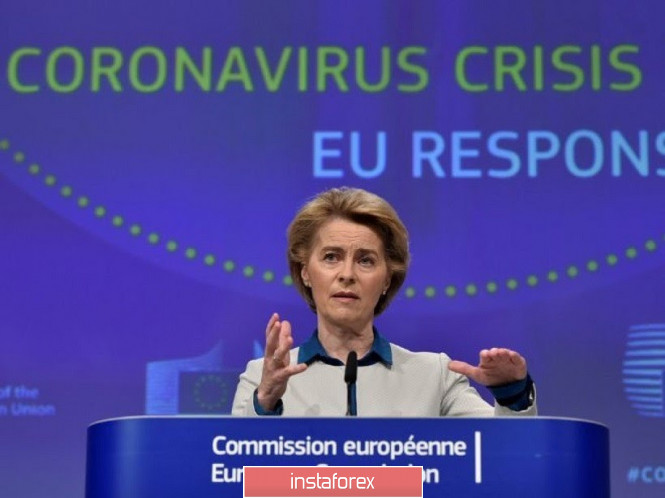The euro-dollar pair retreated from its local highs today, plunging to the middle of the 12th figure. The downward correction was primarily due to the weakening of the euro-traders, who reacted negatively to the updated forecast of the European Commission, which was more pessimistic than the spring version. However, the corrective decline was temporary: bears could not pick up the banner and impulsively pull down the price to the support level of 1.1260 (the average line of the Bollinger Bands indicator coincides with the Tenkan-sen and Kijun-sen lines), although some pressure is still maintained on the pair. There is a positional struggle between buyers and sellers: according to its results, the price will either gain a foothold in the area of the 13th figure, or return to the area of the 11th price level.

On the one hand, the European Commission report was really disappointing: according to updated forecasts, the eurozone economy will contract by almost nine percent this year (8.7%), and, accordingly, will grow by 6.1% next year. The forecast was revised downward relative to the spring estimates. At that time, Brussels predicted a 7.7% decline in the European economy. But as Europe left the quarantine "at a slower pace than previously thought," EC economists revised their previous estimates. If we talk about specific countries, France, Italy and Spain are among the most affected. There, the volume of GDP in 2020 will be reduced by more than 10%. But the European Commission has not changed its forecast for Germany: the German economy should contract by 6.3% (the forecast was at the level of -6.5% back in May). It is noteworthy that according to EC experts, the Polish economy will experience the smallest recession in the European Union (-4.6%) this year. According to the report, the Polish economy has demonstrated relative stress tolerance due to the low level of impact on the affected sectors and a "diversified economic structure".
As for the inflation outlook, weak dynamics are also expected. Despite the growth of the oil market and rising food prices, the impact of these factors on the overall inflation rate will be offset by weak economic growth and low consumer activity.
The euro-dollar pair plunged to the middle of the 12th figure after the disappointing report was released. But the weak position of the US currency prevented the bears from developing a downward momentum. Sellers gave up after several attempts to storm the support level of 1.1260. This was partly facilitated by Isabel Schnabel, a member of the European Central Bank's Executive Board. According to her, the latest macroeconomic reports "were very positive", and this, in her opinion, indicates that the coronavirus crisis may be less destructive, and the recession is not as deep as previously assumed. She also clarified that "the main scenario for the development of the situation" is currently being implemented in Europe. This rhetoric sharply contrasted with the published forecast of the European Commission. Therefore, the euro-dollar pair is stuck in place following sharp price fluctuations, waiting for the next information.

Meanwhile, the greenback shows a downward trend throughout the market: the dollar index has returned to the area of 96 points, reflecting a decline in demand. To one extent or another, the US currency has weakened in almost all key pairs (to one degree or another). Despite US President Donald Trump's reassuring admonitions about reducing deaths from COVID-19 in the US, traders remain concerned about the rate of spread of the coronavirus in the country. The daily growth rate of infected people is stable above 40,000, and has been above 45,000 new cases since June 30. The dynamics are clearly upward, so the dollar is under background pressure. On the one hand, the White House clearly does not intend to close the country to quarantine, but on the other hand, state authorities can tighten (and are already tightening) restrictive measures at the local level.
This ambiguous fundamental background determines the flat movement of the EUR/USD pair. Given the fact that the economic calendar is almost empty on Wednesday, American doctors will be the main newsmakers of the currency market – the greenback will show weakness if the growth rate of the number of infected exceeds the 50,000 mark again, allowing the bulls to seize the initiative.
From the technical point of view, buyers still manage to stay above the support level of 1.1260 - the average line of the Bollinger Bands indicator on the daily chart, which coincides with the Tenkan-sen and Kijun-sen lines. In turn, the Ichimoku indicator shows a bullish Parade of Lines signal. All this indicates the priority of longs to the first resistance level of 1.1360 – this is the upper line of Bollinger Bands on the same timeframe. This scenario has almost been realized today – the pair has risen to the level of 1.1332. The situation has not technically changed at the moment: buyers can still prove themselves by testing the above resistance level.
The material has been provided by InstaForex Company - www.instaforex.com